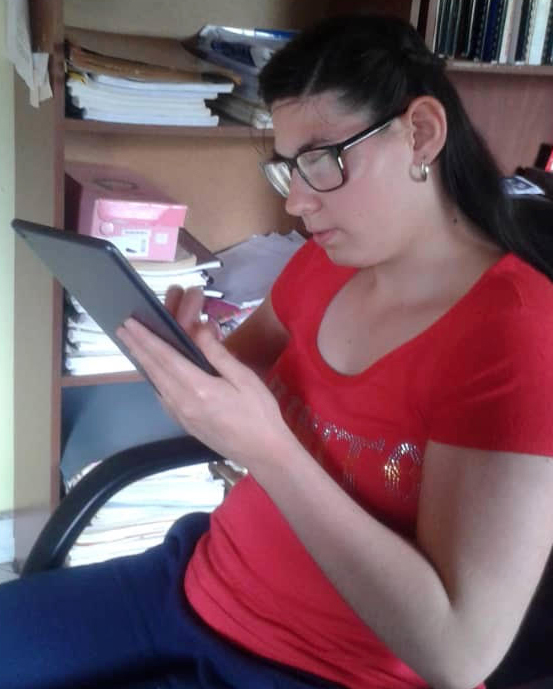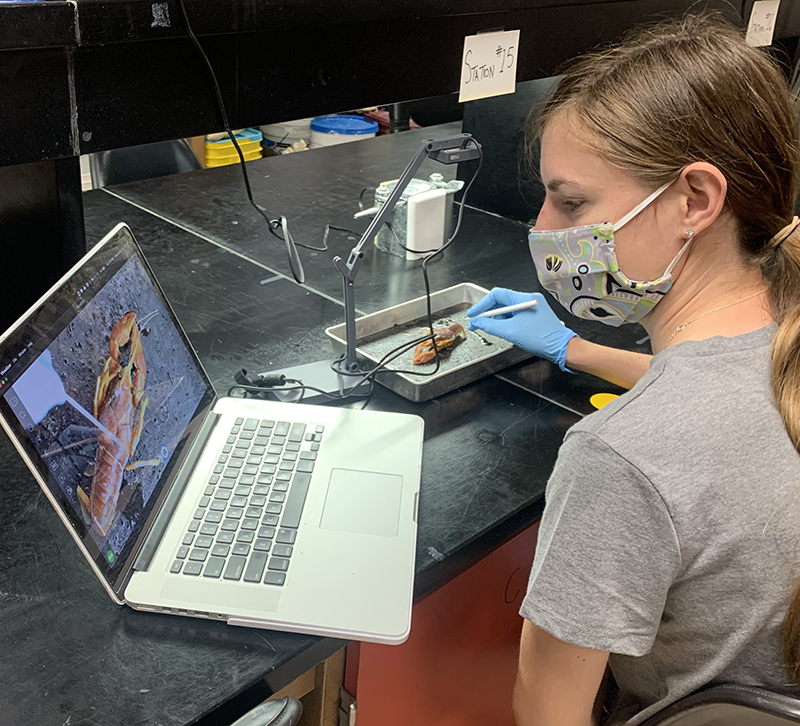My concerns are that accessibility is being put to the side yet again when crisis happens. There is no concern for how I and others will access [online] platforms and work. I will be able to finish my online coursework, but it is a huge challenge.
—Congenitally VI Hispanic female, aged 25 to 34 years, with no additional disabilities
Of 314 participants, 186 (59%) had concerns about their education due to COVID-19 and answered questions about this topic, 32 (10%) had concerns about this topic but did not choose to answer questions, and 96 (31%) did not have concerns about their education.
On March 1, 2020, there were 68 participants who reported attending rehabilitation training programs. Sixty-six of the 68 participants reported how current instruction was being delivered. Twenty-three (35%) participants reported the rehabilitation center/agency had discontinued center-based classes, 15 (23%) reported they were no longer receiving in-home instruction, and 10 (15%) reported attending classes online. There were 43 participants attending a four-year college and 27 attending graduate school. The students were asked how they were completing coursework, with the option to select more than one choice. Forty-seven were attending classes virtually, four had classes discontinued by the institution, and two chose not to attend classes. The 138 participants had the opportunity to provide their level of agreement to two concern statements.18
- The training I received to use new tools my school introduced was accessible to me. (n=6, M=3.83, SD=1.47)
- I am concerned that I will not complete the class, semester, quarter, and/or program due to my visual impairment and the COVID-19 pandemic. (n=116, M=3.01, SD=1.34)
Effect of Moving Instruction Online
For both postsecondary education and rehabilitation students, two-thirds (n=82, 66%) of 158 participants reported their school introduced new technology tools to facilitate students accessing curriculum from home, and 34% (n=42) reported their school had not introduced new technology. When asked about the accessibility of new tools, only 40% (n=33) of the participants reported the new technologies were accessible to them and 60% (n=49) reported they were not. There were five participants (16%) who reported receiving training in how to use new technologies that had been introduced.
I am concerned about the increased use of Google products such as Docs and Sheets, which are not fully accessible with JAWS. I am concerned about take-home tests with time limits, and whether my school will adjust the time limits to comply with my accommodations.
—Congenitally VI White female, aged 25 to 34 years, with no additional disabilities
Online courses necessitate many hours of screen time. Those with low vision expressed alarm at the level of visual fatigue this can cause. A few participants shared specific concerns related to visual access issues, including content that was difficult to see, online discussion boards that were poorly organized and difficult to follow, and poor contrast between font color and background.
As a result of the move to online education, there were some participants who developed their own methods for accessing online content. For others, the content of the class did not lend itself to online access due to the participant's visual impairment and, in some cases, additional disabilities.
I could not finish my [American Sign Language] class because I am deafblind and on Zoom it was hard for me to see the [signing]. My American Politics and Government class went onto Zoom also. I get onto Zoom and Facebook Messenger so my interpreter can voice what they are saying in Zoom.
—Congenitally VI White female, aged 25 to 34 years, with additional disabilities
Accommodations and Instruction In College Classes
Some participants who used accommodations for classes, including braille materials, tactile graphics, sighted assistance, or alternative testing arrangements, did not have access to these accommodations once their classes moved online. Thus, their ability to access and learn the material was negatively affected.
I am taking an organic chemistry class. Prior to the pandemic, disability services were providing tactile materials for the class. We cannot figure out a safe way to deliver large amounts of material, so I have to take an incomplete in the class and continue it in the summer.
—Congenitally VI White female, aged 18 to 24 years, with no additional disabilities
Students who could not access needed accommodations worried about completing their classes and/or their ability to finish their degree program on schedule.
The quick shift from in-person to online instruction affected instructors as well as students. A few students shared their thoughts about how their instructors adapted and how their instructor's treatment of those with visual impairments changed.
I think my professor will be understanding, but I do not like what strains this junk is doing to everyone, not just me. I think that they will pass me no matter what I do, and that makes me sad for some reason.
—Congenitally VI White female, aged 25 to 34 years, with no additional disabilities
Dog Guide and Rehabilitation Training
For the 68 participants attending dog guide and/or rehabilitation training, the COVID-19 pandemic interfered with their programs. Ultimately, this interference resulted in their plans changing and/or their ability to develop greater independence being sidetracked.
[I w]as just starting O&M training to learn the new neighborhood and area I had moved to in January, but all that route training has been put on hold until the sheltering in place has lifted. Concerned that it will just take that much longer to learn this new area and will delay my ability to independently make it to and from work when I'm allowed to go back into the office.
—Adult-onset VI White male, aged 35 to 44 years, with no additional disabilities
A few participants acknowledged that when they would be able to return to onsite training was not known at the time they took the survey. During this time of uncertainty, staff from some schools and agencies were reaching out to students.
RecommendationsMy determination will get me through as it always does.
—Child-onset VI Black or African American male, aged 35 to 44 years, with no additional disabilities
Many of the tools that were used by participants' educational institutions proved to have accessibility issues or insufficient training for students and instructors with visual impairments to fully take advantage of the learning management tools, educational applications, and online platforms. Educational institutions have an obligation to ensure that all platforms procured for instruction are accessible during the procurement process.
- Educational institutions must take proactive steps to evaluate accessibility of learning tools prior to purchase to ensure that students with visual impairments and instructors are able to use all features of the learning tools used by those who are sighted.
- Disability resource offices should strengthen protocols for ensuring that students with visual impairments taking classes remotely have a plan for obtaining the appropriate accommodations, accessible materials, and course access. Instructors with visual impairments need the same accommodations in order to teach their classes effectively.
- Educational institutions should provide accessibility training and support to instructors to ensure they create equitable learning experiences for students with and without disabilities.
- Educational institutions should create a culture of accessibility that encourages and equips instructors to provide nonjudgmental and ready access to students with disabilities. Instructors can place their focus on evaluating the quality of student work, rather than when work was completed.
- Training in the use of technology tools for education and employment needs to be accessible. Developing a text-based version of training videos that clearly outlines steps for users, including short-cut keys for those using screen reader software, and that provides the location of icons, buttons, and other visual aspects of the tool for those with low vision, will allow greater ease of use and higher productivity.
18. The mean (M) is derived by averaging the participants' ratings, strongly disagree (1) to strongly agree (5). The larger the standard deviation (SD) the greater the spread from the mean of the participants' ratings.

